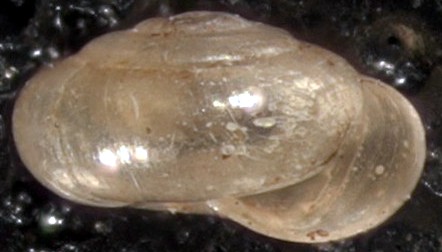Adaptation
 One of the main adaptations of Guppya
sterkii is its use of calcium (Hickman
et al. 2009). This species along with many other land
snail species take up calcium
through feeding and digestion and use it in their mantles (Carnegie
Museum of Natural History, 2011). These mantles
are what secrete the hard calcareous shells that is
characteristic of most snails (Williamson, 1976).
This need for calcium causes many land snails to live near areas
that contain calcium deposits and could explain why Guppya
sterkii prefers a habitat near calcareous cliffs in
Michigan and Iowa (Carnegie Museum of
Natural History, 2011).
One of the main adaptations of Guppya
sterkii is its use of calcium (Hickman
et al. 2009). This species along with many other land
snail species take up calcium
through feeding and digestion and use it in their mantles (Carnegie
Museum of Natural History, 2011). These mantles
are what secrete the hard calcareous shells that is
characteristic of most snails (Williamson, 1976).
This need for calcium causes many land snails to live near areas
that contain calcium deposits and could explain why Guppya
sterkii prefers a habitat near calcareous cliffs in
Michigan and Iowa (Carnegie Museum of
Natural History, 2011).
Another adaptation that is seen with Guppya sterkii along with many other terrestrial snails is that they are mostly seen in the spring or fall after rain showers or when the soil is moist (MI NFI, 2011). Cooler temperatures and times when the humidity is high are also occasions when one can witness higher snail activity (MI NFI, 2011). This change in activity level along with the weather is due to the fact that they want to prevent water loss from their bodies (Hickman et al. 2009).
Along with the above adaptation, one of the other adaptations that land snails and many other mollusks have is well developed nervous and sensory systems (Hickman et al. 2009). Most land snails have two pairs of tentacles and the posterior pair is where the eyes for this organism are located (Hickman et al. 2009). Light receptors are also present in the body of most snails (Hickman et al. 2009). This allows them to sense when a shadow is coming over them and it signals them to move into their shell until they are able to recognize what is causing the shadow (Carnegie Museum of Natural History, 2011). Additionally, most snails also have olfactory receptors which are generally present in the lips of snails (Hickman et al. 2009). This allows them to be able to smell food and move to move towards food(Carnegie Museum of Natural History, 2011).